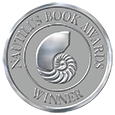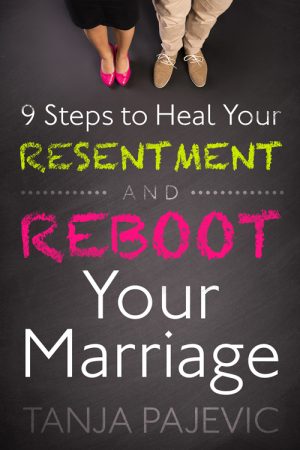How to Write a Book in 10 Simple Steps
Always wanted to write a nonfiction book? This guide will show you how write a book in 10 simple steps so that you can get those ideas out of your head and onto the page. Taking the time to work through these steps will save you tons of time, money and energy as well as keep you from having to do unnecessary rewrites.
STEP 1: How to Clarify Your Book’s Audience, Purpose and Goals
A. Let’s start by getting clear on your book’s purpose.
Grab a pen and paper and jot down your answers to the following questions. Please don’t edit yourself.
What’s the purpose of your book? Perhaps it’s to help heath-care professionals navigate the increasingly-high level of bureaucracy in their office. Or maybe you want to teach stay-at-home moms how to start a side-business. Perhaps you want your fiction to help young teens.
 B. Now that you know your book’s purpose, let’s get clear on your book’s audience.
B. Now that you know your book’s purpose, let’s get clear on your book’s audience.
The more specific you can be, the better. For example: if your audience is entrepreneurial women, drill down and clarify what makes your group unique. Which leaders do they follow? Where do they spend their time online? What’s their personal life like?
TIP: This is one of those places where folks tend to get stalled. When you try to appeal to a wide audience, you end up appealing to no one. Ironically, the more specific you can be with your audience, the more people your book will appeal to.
C. Now let’s explore your goals. What do you want to accomplish with this book?
Maybe you want to establish yourself as an authority in your field, or increase your media presence. Or maybe you’d like to pass your family stories down to future generations. Whatever your goals are, let’s get clear on them.
Once you’ve done that, let’s take a minute to explore what’s beneath that. For example, I’m guessing you’d like to make a certain amount of money from this book. That’s great. Perhaps you even want to impress your loved ones with it. That’s good information, too—as long as we’re clear on our underlying goals. When we’re not, the shadow side of those goals can get in the way and trip us up.
STEP 2: How to Get Clear on Your Book’s Benefit
So far, we’ve identified your book’s audience and purpose, as well as your goals for your book. Now let’s get clear on what problem your book is solving.
In other words, what’s the benefit of your book? Why will your ideal reader pick it up? What will they have learned once they’ve finished your book?
For example, let’s say your book teaches empty nesters how to rekindle their relationships with their spouse. That’s your book’s benefit.
Once you’ve identified your book’s benefit, let’s decide how to get your reader from where they are to where they want to be. What are the 3 most important pieces of information your reader needs to get to the finish line?
In our empty nester example, let’s decide what 3 things our ideal reader will need in order to rekindle her relationship with her spouse. This will become the book’s forecast (or a road-map for what the book will teach her).
Here’s an example:
This book will show empty nesters how to rekindle their relationships with their spouse by
- a) committing to clear communication,
- b) rewriting the rules of their relationship and
- c) committing to ongoing personal growth.
TIP: One of the ways writers get bogged down is by trying to include too much information in a single book. Once you have your main points, stick with them. Remove anything that’s off-topic. That’s why it’s crucial you’re clear on your book’s main points before breaking your outline down into specifics.
STEP 3: How to Write a Book Outline
Good news! By identifying the book’s main themes in your forecast, you’ve also created your book’s main outline. Let’s use that to create a more detailed outline.
In the example above, we broke our book down into 3 main topics:
- Part 1: How to Communicate Clearly
- Part 2: How to Rewrite the Rules of Your Relationship
- Part 3: How to Commit to Ongoing Personal Growth
Let’s say we want this book to be about 150 pages long. That means that each of these sections will be approximately 50 pages.
A. Now let’s break those 3 main sections down into chapters.
As a general rule of thumb, 9 chapters is a good number for a non-fiction book. That means that if you have 3 main sections to your book, each of those sections can be broken down into 3 chapters, as follows:
Part 1: How to Communicate Clearly
- Chapter 1
- Chapter 2
- Chapter 3
Part 2: How to Rewrite the Rules of Your Relationship
- Chapter 4
- Chapter 5
- Chapter 6
Part 3: How to Commit to Ongoing Personal Growth
- Chapter 7
- Chapter 8
- Chapter 9
B. Now that we have the book’s general outline, let’s clarify what each chapter is going to cover.
Let’s start with Part 1: How to Communicate Clearly.
What are the 3 main ideas your audience needs to know to communicate clearly?
Perhaps they are:
- listening,
- asking for what they need and
- establishing healthy boundaries.
These will be the topics for the first 3 chapters.
 NOTE: Notice that we asked “what your audience needs to know.” We didn’t ask what you want to teach them. This is an important distinction. Too many authors get off track by trying to share what they want to teach. Your first goal in writing this book is to give something of value to your reader. To do that, you need to get clear on what exactly it is that they need. That’s why we spent so much time clarifying our audience and purpose early on.
NOTE: Notice that we asked “what your audience needs to know.” We didn’t ask what you want to teach them. This is an important distinction. Too many authors get off track by trying to share what they want to teach. Your first goal in writing this book is to give something of value to your reader. To do that, you need to get clear on what exactly it is that they need. That’s why we spent so much time clarifying our audience and purpose early on.
C. Once you’ve broken your 3 main points into chapters, give each chapter a simple title.
Don’t worry about creating a fancy chapter title. At this point, you want your chapter titles to be clear and to the point. You can always revise later.
D. Once you’ve created your chapter titles, break each chapter down into 3 sub-sections.
If you get stuck, ask yourself what your reader needs to know to get from point A to B. Then write that down. Stick to the main points at hand, always asking yourself what your reader needs to know.
Remember, at this point, it doesn’t have to be pretty. (That’s what revision is for.) It does have to be clear.
From here, you can reverse-engineer your book by breaking each section down into a set number of pages. Some folks like to do this by word count instead.
E. Here’s what your sample outline might look like so far:
PART 1: How to Communicate Clearly (50 pages total)
Chapter 1: Listening (16.6 pages total)
A: How the past affects the present (5.5 pages)
- First-family patterns (1.83 pages)
- Previous romantic relationships (1.83 pages)
- Social expectations (1.83 pages)
B: How brain science affects the nervous system (5.5 pages)
C: Devices and other obstacles (5.5 pages)
Chapter 2: Asking for What You Need (16.6 pages)
Chapter 3: Establishing Healthy Boundaries (16.6 pages)
F. Now that we have a detailed outline, let’s see if there’s anything that needs to be broken down further.
In this example, each chapter sub-section is approximately 5 and a half pages long. Depending on the complexity of your subject matter, that may or may not be able to be broken down further. If you get stuck, a good rule of thumb is to break each section down into 3 sub-sections. This will help keep you on track.
REMEMBER: Pare it down. Simpler is better. Too much info and you’ll lose your reader.
STEP 4: How to Create Your Book’s Work Plan and Set Yourself up for Success (a.k.a. How to Beat Writer’s Block)
 Congratulations! If you haven’t yet celebrated for making it this far, now’s the time. Pat yourself on the back, pump your fists in the air, do a victory dance—whatever you’d like. Celebrating your successes makes it easier to stay on track (plus, it makes the process more fun.)
Congratulations! If you haven’t yet celebrated for making it this far, now’s the time. Pat yourself on the back, pump your fists in the air, do a victory dance—whatever you’d like. Celebrating your successes makes it easier to stay on track (plus, it makes the process more fun.)
Alrighty! Now that you’ve created your book’s outline, I’m guessing you’re either a) itching to get your book written, b) terrified to start or c) some combination of the two. Writing a book can bring up all sorts of emotions, which is why we took the time in Step 3 to break your book’s outline into manageable steps.
Let’s do the same with your game plan. Let’s create a manageable work schedule that you can actually follow—one that takes into account your real, human-scaled life with all its commitments (not some ideal or perfect version of yourself).
A. Let’s start by identifying a good time of day for you to work.
Are you a morning person, or a night owl? How much time can you realistically commit to? Can you get up an hour early, or would it make more sense to schedule in a 30-minute writing session during your lunch hour or after you’ve put the kids to sleep?
TIP: Be realistic. Don’t shoot for perfection—it’s the shortest path to getting stuck (and burning out).
If you’re having a tough time finding time to write, this post will help you figure out what you need to say no to in order to say yes to your book.
B. Once you’ve figured out which days and times you can commit to, schedule them into your week.
This is your writing time, and it needs to be protected. Treat your writing time like you would any other important meeting. Don’t break those dates with yourself!
C. After you’ve scheduled in your writing time, decide how much you’d like to accomplish during that time.
One page in 45 minutes? A draft of one sub-section in two hours?
D. Next, schedule in the amount of writing time you’ll need for each little piece of your project.
If you get stuck, break your project down further. Think about how much time each sub-section will need, and approximate. You can always adjust once you better understand your pace.
Again, remember your human-scaled life when you’re scheduling your writing plan. Yes, it might take you longer than you’d like to get your first draft written, but that’s still a win. So many people set themselves up to fail by giving themselves impossible deadlines that they’re never able to meet. Don’t become another statistic whose book has fallen by the wayside. Done is better than perfect!
BONUS TIP: Once you’ve created your writing plan, find an accountability buddy. Support is crucial when you’re writing a book, and you’ll want to have as many folks in your corner as you can. Checking in with someone every week can do wonders.
Wondering how to create a consistent writing schedule that works with everything else you have going on in your very-full, very-real life? Click here to learn how to create a consistent writing habit and get off on the right foot.
STEP 5: How to Write a Messy First Draft
New writers often get bogged down trying to create a perfect product with their first draft. That’s the quickest way to make yourself crazy—and it often leads to self-sabotage. Published writers create quality products through revision and more revision. That’s not the sexy, romanticized version of writing you’ll see on television, but it’s the truth. Very few writers produce something that’s perfect on the first draft.
So give yourself permission to write an ugly first draft. Writer Anne Lamott calls this the shitty first draft. Your goal with this first draft is simply to get your main ideas down on paper, not to edit them. Just get your thoughts down on paper. That’s it.
Easy enough, right? It can be, if you can keep yourself from editing as you go (not to mention judging yourself or your writing).
So when you get that itch to go back and rewrite a clunky section, don’t do it! Keep writing instead. This is critical. So many writers get bogged down with rewriting too early in the game. There are two problems with this:
- You can spend months rewriting your first chapter, trying to make it perfect, without ever getting to the next section of the book.
- There’s a very real possibility that some of your finely-edited first chapter will end up on the chopping block during final revisions, and then you’ll be kicking yourself for having spent all that time revising something you just had to toss!
So keep it simple. And keep going.
When you’re done, set aside your manuscript for at least a week. Even a few days can help you get enough perspective for the next step.
STEP 6: How to Do a Developmental or Structural Edit to Make Sure the Big Picture Holds Together
Once you’ve let your messy first draft rest for a few days, set aside a chunk of time so that you can read over the entire manuscript in one sitting. A weekend works well, though a full day can work in a pinch. Know your limits.
 Once you’ve cleared your schedule, print out your manuscript and settle in with a cup of tea or coffee and a couple of good pens or highlighters. Don’t try to do a large-scale edit on a computer; you’ll get bogged down. It’s much easier to do this with pen and paper.
Once you’ve cleared your schedule, print out your manuscript and settle in with a cup of tea or coffee and a couple of good pens or highlighters. Don’t try to do a large-scale edit on a computer; you’ll get bogged down. It’s much easier to do this with pen and paper.
Play your favorite music, or work outside for a bit. Either way, make sure that you’re taking good care of your body and plan on taking plenty of breaks.
Read through the entire manuscript, taking notes as you go. Here’s what you’re looking for: sections that don’t make sense, areas that can be condensed or expanded.
Your focus should be on how the entire manuscript comes together; don’t worry about grammar, though you can certainly mark mistakes when you see them. What you don’t want to do is edit at the sentence level. Don’t get stuck in the reeds.
Take the bird’s-eye view instead. What works, and what doesn’t? What needs to clarified? What needs to be condensed?
If you’re stuck, try spreading the pages out on the floor. Sometimes seeing everything spread out can make it easier to figure out. You’ll see pacing mistakes very clearly (i.e.: Hmm, this sub-section of my chapter is too long at 15 pages. How can I cut that down to 8 pages?)
TIP: If you want to make sure that your manuscript is as solid as it can be and that all the pieces work together, this is the point when you’ll want to hire a developmental editor for a manuscript review.
One of the biggest mistakes writers make is waiting until they’re done with their manuscript before hiring an editor. This often leads to major rewrites, increasing the cost, time and emotional investment of your project.
Getting a developmental manuscript review early in the process will help you figure out if your book works before you spend precious time and energy polishing your manuscript—saving you lots of frustration, not to mention time and money. It’s essential to get big-picture help with narrative style, pacing, structure and technique before you get bogged down in line-edits and final revisions.
Here’s what I look for in a manuscript review.
If you’d like to hire me to review your manuscript, please contact me here.
For a fuller explanation of the different types of editing, click here.
STEP 7: How to Revise Your Book for Success
Now that you’re clear on the structural edits your book needs, sit down and schedule these revisions into your schedule. Again, set yourself up for success. What does your life look like these days? How much can you realistically accomplish?
If you can, give yourself a bit of extra padding, time-wise. This round of revisions can take longer than anticipated, so be kind to yourself and your body. Know your limits, and celebrate your successes.
Rinse and repeat!
STEP 8: How to Get Feedback on Your Book
Once you’ve revised your manuscript, reach out to 3-5 beta readers for feedback. Ideally, these folks should be members of your book’s audience. At very least, they should be trusted readers with a good knowledge of your audience’s background and problems. Don’t reach out to loved ones and family members for this task; you want honest feedback, not glowing (but potentially inaccurate) reviews.
 It’s essential that you get an impartial eye on your manuscript. If you’d like professional feedback, this is another opportunity to hire a developmental editor for a manuscript review to make sure that you’re getting help with the big-picture pieces before you start editing on the micro level.
It’s essential that you get an impartial eye on your manuscript. If you’d like professional feedback, this is another opportunity to hire a developmental editor for a manuscript review to make sure that you’re getting help with the big-picture pieces before you start editing on the micro level.
Once you’ve identified your ideal readers, prepare a list of questions for them. Give them clear boundaries around what kind of feedback you’d like, as well as what you don’t. For example, you might want to ask if your book delivers what it set out to do. Have you shown your reader how to get from point A to point B?
If you have specific questions, throw those in, too. The more guidelines you can give your readers, the better feedback you’ll receive.
And be sure to give your readers a deadline. We’re all so busy in this day and age that it’s easy for a loose deadline to slip. Don’t waste precious weeks and months waiting for a reader to get back to you.
STEP 9: How to Incorporate what Resonates
Cull your feedback and revise your manuscript to incorporate what resonates.
Create a document to record reader feedback, so that you can track commonalities as well as contradictory suggestions. If you find that 4 out of 5 readers have the same issue, pay attention. If one person is confused by chapter X and 4 others love it, let it go.
If you can, give yourself at least a few days for the dust to settle. After all the hard work you’ve put into this book, getting feedback can be emotional.
You might find yourself angry or upset, ready to argue with your readers or explain what they missed. Please don’t. Remember that your future readers won’t have the benefit of your explanation; everything needs to be spelled out clearly on the page. That’s why your beta readers are so valuable. They’ve got enough distance to see something you might miss.
That said, always pay attention to your gut. If need be, ask for further clarification.
When you’re ready, revise your manuscript to incorporate appropriate feedback. Again, set yourself up for success. Take care of your mind and body and give yourself plenty of breaks. Celebrate even the smallest of successes.
REMEMBER: done is better than perfect. There’s no such thing as a perfect book, so please don’t waste years of your life trying to create one. Those who try often don’t finish. Let’s get your book out into the world instead!
STEP 10: How to Hire a Copy Editor
You’ll need a professional eye to check for grammatical mistakes and other small errors. One of the biggest mistakes new authors make is trying to do it all themselves. Unfortunately, this is one of the easiest ways to put out a sub-par product.
Don’t skip this step! A good copy editor isn’t cheap, but this is one area where you don’t want to skimp.
If you don’t have the budget for a good copy editor, find at least 3 readers to review your final draft. Ideally, these should be strong writers or folks with an eye for grammar. In exchange for their time, give them large gifts and lots of love J.
Once you’ve received your edited manuscript back from your copy editors, incorporate their edits.
And then . . .
STEP 11: Celebrate!
That’s HUGE, and it deserves a celebration!
Not only did you write your book (!!) but each project you complete strengthens your completion muscle, which sets you up for more success down the road.
Pretty cool, right?
And he world needs your story now more than ever, truly. So let’s get your book written, wherever you are in the process. Let’s get your book out into the world!
Tanja



